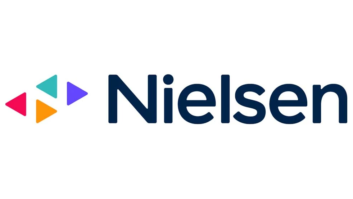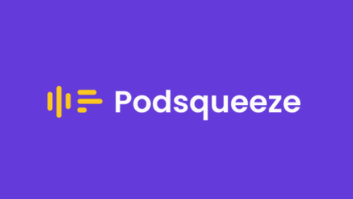This story is part of a week-long series where author Tom Vernon breaks down the newly-released “Infinite Dial” report, which gives insights into various aspects of radio’s modern competitive environment and consumer consumption habits. 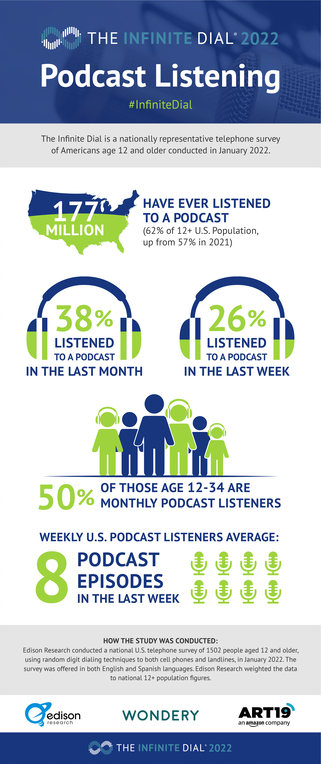
When last year’s Infinite Dial was released, the results were influenced to a great deal by the number of people in lockdown. This year’s data is skewed by the small but significant number of respondents who have returned to work or school, particularly those in the 12-34 demographic. This trend is especially evident in the information presented about podcast consumption.
Edison’s data suggests that 226 million people, roughly 80 percent of Americans, are familiar with podcasting. That’s a number that’s been steadily trending upwards since 2016.
One of the highlights of podcasting stats is the five percentage point jump in respondents who have ever listened to a podcast, from 57 to 62 percent. Despite economic woes, that growth has never faltered.
Much of this gain, according to Edison SVP Tom Webster, may be explained by the lockdown. With no place to go, people were willing to experiment with new things, such as listening to podcasts. That drove the familiarity, monthly and weekly listening numbers up. As people began returning work and school, some fell out of the podcasting habit, and that, according to Webster, is reflected in the data, which shows a drop in the weekly and monthly numbers for 2022.
Monthly listening fell from 41 to 38 percent last year, while the weekly numbers from the research went from 28 to 26 percent. Note that in both instances, research suggests that the overall trend is still going up.
More insights into what happened may be gleaned by looking at research which suggests where respondents were listening, and what devices they used. During the first quarter of 2021, 64 percent were listening at home, while 14 percent did so in their cars. By the fourth quarter, those numbers had changed to 57 percent at home and 20 percent in the car.
When asked what devices they used, the results seem to tell the same story. In the first quarter of 2021, 64 percent of respondents reported using a smartphone, while 20 percent used a desktop/laptop computer. By the end of the year, 73 percent were using a smartphone, and just 13 percent used a computer.
According to Webster, many of those who dropped of the radar as far as podcast use, were in the 12-34 demographic, those who went back to school and work. That statement is borne out when monthly podcast listening is broken out by age demographics. The data suggests a 6 percentage point drop in 12-34. At the same time, 35 to 54 actually grew by four percentage points, and 55+ remained neutral, returning to its pre-lockdown figure of 22 percent.
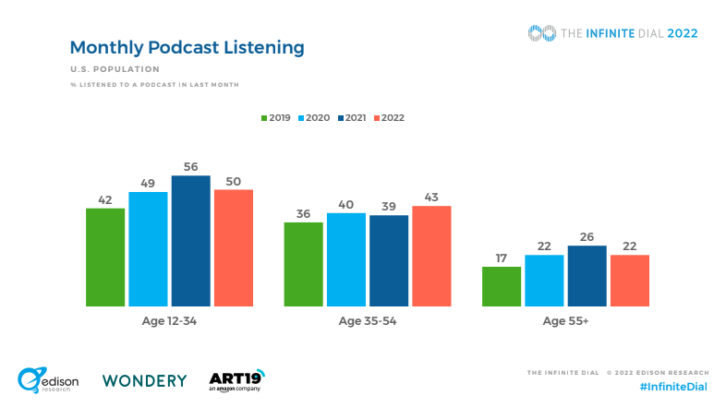
When the data is broken down into ethnicity of monthly podcast users, Edison’s data suggests that a predominately white audience consumed podcasts in 2012, and over the ensuing ten years, the numbers have shifted to more closely approximate the makeup of the US population.
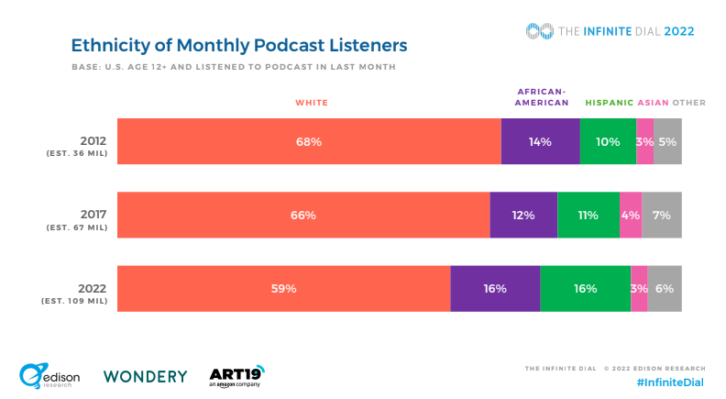
Podcasting has clearly passed critical mass, and is becoming a part of big media. That said, there are still a large number of indie podcasters out there. Wondery CEO Jen Sargent shared some of her tips for those independents at the conclusion of The Infinite Dial 2022 presentation.
Don’t be discouraged. As the data has shown, there are many opportunities and underserved audiences. The 12-34 and 55+ demographics are low hanging fruit, but also consider kids and family and international outreach.
Understand the why. You should be able to answer these questions. Why would someone be willing to displace a podcast they’re already listening to in order to tune in to yours? Why might they recommend your podcast to their friends? Answers to these questions will help to shape your content.
Word of mouth promotion is still key, but remember that audio drives audio. Reach people through other podcasts. Be a guest on a friend’s podcast, and have them appear on yours. Leverage your RSS feed. YouTube can be a great mechanism for promotion and discovery of your podcast, and can also be another driver to your RSS feed.
[Read the first in this five-part series: “Survey Says Media Consumption Trends Upwards”]

